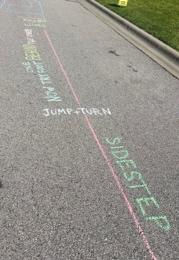W-Sitting
- All Care Therapies

- Nov 15, 2022
- 2 min read

W-sitting is a term used to describe when a child sits on their bottom with their knees bent towards each other and feet pointed outwards, away from the hips, forming a “W.” Sitting in this position for a prolonged period of time can cause development problems such as: increased risk of hip dislocation, weakened core muscles, increased muscle tightness in the hips/legs, and can even lead to "pigeon-toed" walking.
Why is my child W-sitting?
Weak core/trunk muscles
Excessive hip flexibility aka joint hypermobility
Bone alignment/formation during pregnancy
Low muscle tone
It's the easiest way to sit! Kids love it because it requires the least amount of physical work.
Now, some research actually suggests that “W-sitting” is not detrimental simply because children will eventually “grow out of it.” Which is true, to an extent. When a child sits in the W position for a short amount of time, long-term detrimental effects are unlikely. However, sitting in this position, even for a short time each time, creates a habit of W-sitting that increases the above risks over time.
When a child W-sits, their base of support is very wide, making it difficult to transition in and out of positions that are important for their gross motor development - crawling, kneeling, and standing. On the bright side, there are many alternative positions that are comfortable and developmentally appropriate! Here are a few to get started with:

Cross-legged position aka “Criss-cross-applesauce” - This is the opposite of W-sitting. It promotes proper alignment & motor development by externally rotating the hips & knees.
Side sitting aka “Z-sit” - Uses different stabilization tactics that incorporate weight-bearing through the upper body to help the transition in and out of sitting. (Pro-tip: alternate sides so that the child can develop trunk control, strength, and balance reactions on both sides.)
Long sitting aka “L-sit” - Great challenge for postural trunk muscles and encourages increased trunk rotation for reaching side to side. Also, this is great for hamstring flexibility!
Switching up their playing positions helps children figure out how to use their own muscles and helps them be the strongest kids they can be. Regardless of “growing out of it one day,” it’s so important to teach your kids positions that will strengthen and promote smooth development while still having fun!
Sources:
Campbell, S, Palisano, R, Orlin, M. Musculoskeletal Development And Adaptation. Physical Therapy for Children. 4th ed. St. Louis, MO: Elsevier Saunders; 2012:186.
Leblebici, G., Akalan, E., Apti, A., Kuchimov, S., Kurt, A., Onerge, K., Temelli, Y. and Miller, F., 2019. Increased femoral anteversion-related biomechanical abnormalities: lower extremity function, falling frequencies, and fatigue. Gait & Posture, 70, pp.336-340.




Comments